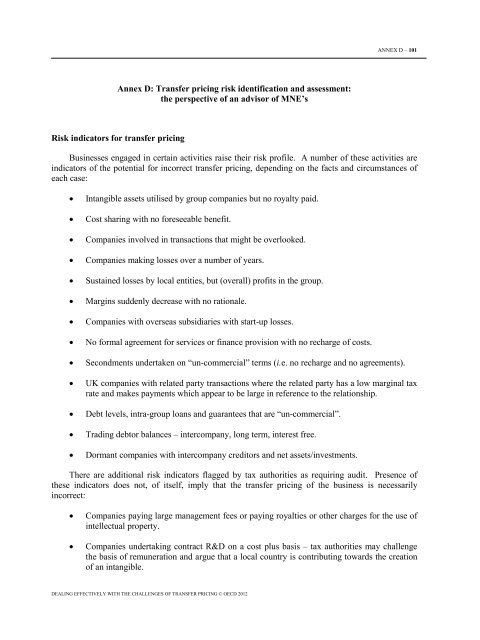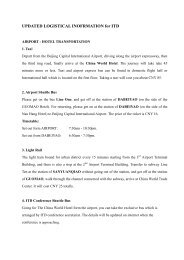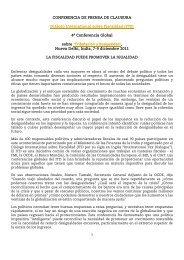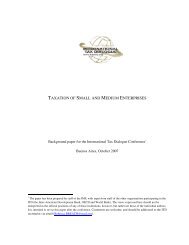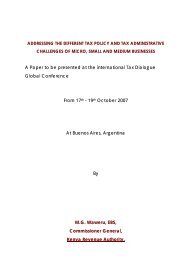Arcotia Hatsidimitris - International Tax Dialogue
Arcotia Hatsidimitris - International Tax Dialogue
Arcotia Hatsidimitris - International Tax Dialogue
You also want an ePaper? Increase the reach of your titles
YUMPU automatically turns print PDFs into web optimized ePapers that Google loves.
ANNEX D – 101<br />
Annex D: Transfer pricing risk identification and assessment:<br />
the perspective of an advisor of MNE’s<br />
Risk indicators for transfer pricing<br />
Businesses engaged in certain activities raise their risk profile. A number of these activities are<br />
indicators of the potential for incorrect transfer pricing, depending on the facts and circumstances of<br />
each case:<br />
• Intangible assets utilised by group companies but no royalty paid.<br />
• Cost sharing with no foreseeable benefit.<br />
• Companies involved in transactions that might be overlooked.<br />
• Companies making losses over a number of years.<br />
• Sustained losses by local entities, but (overall) profits in the group.<br />
• Margins suddenly decrease with no rationale.<br />
• Companies with overseas subsidiaries with start-up losses.<br />
• No formal agreement for services or finance provision with no recharge of costs.<br />
• Secondments undertaken on “un-commercial” terms (i.e. no recharge and no agreements).<br />
• UK companies with related party transactions where the related party has a low marginal tax<br />
rate and makes payments which appear to be large in reference to the relationship.<br />
• Debt levels, intra-group loans and guarantees that are “un-commercial”.<br />
• Trading debtor balances – intercompany, long term, interest free.<br />
• Dormant companies with intercompany creditors and net assets/investments.<br />
There are additional risk indicators flagged by tax authorities as requiring audit. Presence of<br />
these indicators does not, of itself, imply that the transfer pricing of the business is necessarily<br />
incorrect:<br />
• Companies paying large management fees or paying royalties or other charges for the use of<br />
intellectual property.<br />
• Companies undertaking contract R&D on a cost plus basis – tax authorities may challenge<br />
the basis of remuneration and argue that a local country is contributing towards the creation<br />
of an intangible.<br />
DEALING EFFECTIVELY WITH THE CHALLENGES OF TRANSFER PRICING © OECD 2012


